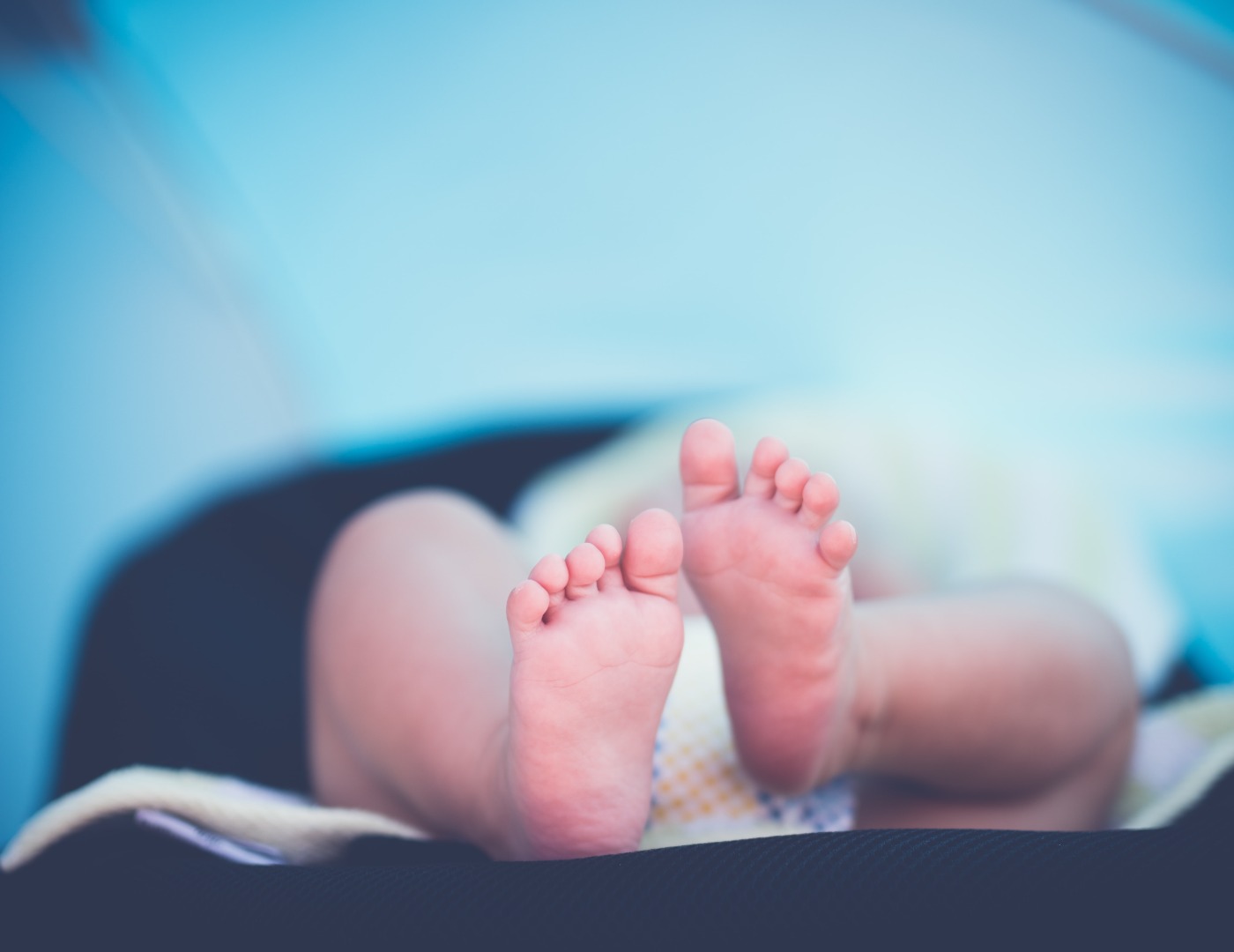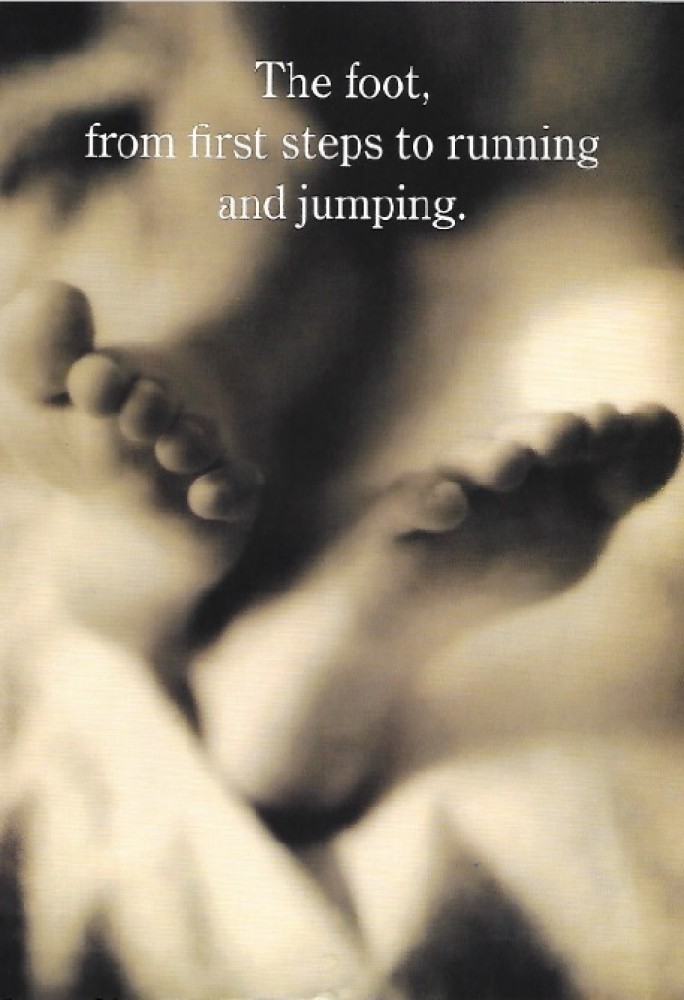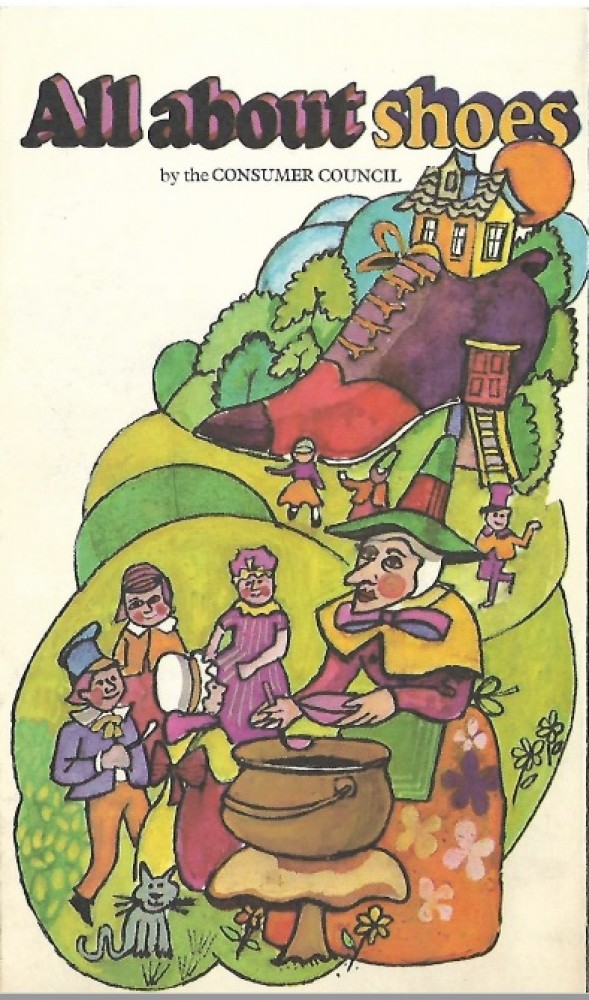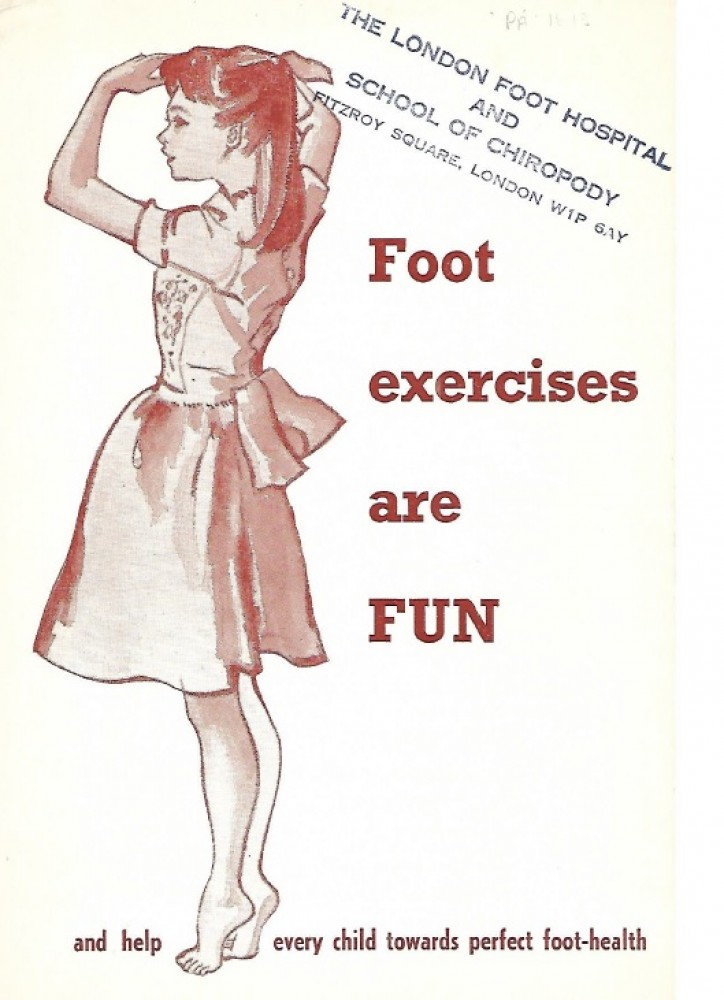Your children and their feet

A brief look at the advice experts have provided over the years about children's feet and buying early years shoes
Here at the College, whilst thinking about how we could help parents tasked with buying children's shoes for the start of the new school year, we asked our curator at the Centre for the History of Podiatric Medicine (CHoPM) if there was anything in the archives on this important topic.
Our enquiry revealed the following three items:
The foot, from first steps to running and jumping
 This 1970s leaflet from Clarks looks at how a child learns to walk.
This 1970s leaflet from Clarks looks at how a child learns to walk. Walking skills develop slowly between one and two and a half years, in three stages:
1. First independent steps
2. Confident toddling
3. Running and jumping
To begin with, rather than a means of getting from A to B, walking is simply a means of coming and going around an adult, usually the mother.
Increased mobility develops as soft cartilage forms into bone, and the flat foot of the child's foot curves into a stronger, weight-bearing arch.
Proper shoes with the correct fitting are critical during the evolutionary stage of the child's foot.
Choosing the correct shoes for healthy, growing feet
Note:
Three out of four adults have trouble with their feet because they wore badly-fitting shoes when younger. It need never happen to a toddler as long as soft feet aren't squeezed into the wrong shoes.
A good first shoe should:
- Allow the feet room to grow
- Avoid pressure on the toes
- Allow the foot to breathe
- Have adjustable fastening
- Have a flexible sole
- Be the correct width fit, which is equally important as length.
The shoe fitter
As you would expect from a shoe retailer, the Clarks' leaflet emphasises the important role of the shoe fitter which it describes like this:
- First he or she will carefully put the foot into the shoe gently guiding the toes to the front
- With the child standing up and the shoe fastened the trained shoe fitter will then feel to see whether the shoe is fitting comfortably across the toes, instep, ankle and heel
- And that there's adequate room for growth
- Finally, he or she will watch how the child walks, to see there is no restriction, no creasing and no slipping.
A good shoe fitter will also recommend that, as children's feet grow quickly in the early years, children should have a regular shoe fit check: six to eight weeks for a toddler, and every two to three months for older children.
Download The foot, from first steps to running and jumping to learn more about your children's feet
Today Clarks is one of the Royal College of Podiatry's partners.
All about shoes
Published by the Consumer Council, March 1969
 With a cover illustration depicting the legendary old woman who lived in a shoe, and illustrated throughout with colourful drawings, this 1969 publication from the Consumer Council asked:
With a cover illustration depicting the legendary old woman who lived in a shoe, and illustrated throughout with colourful drawings, this 1969 publication from the Consumer Council asked:
Buying shoes isn't complicated - or is it?
You can recognise all the styles and you know what you like - but how much do you really know about shoes? Undoubtedly you wouldn't buy court shoes for long country walks. Nor would you pick Wellington boots for an evening out.
But how many of these other questions can you answer?
- Which style of shoe is most suited to my purpose?
- What do I consider most important? Style? Comfort? - - Durability? How can I judge these qualities?
- Which of these features would I be willing to sacrifice?
- What is my correct size and fitting?
The leaflet offers detailed advice under the following headings:
- Comfort - which depends on correct size and fittiing
- How you can be sure a shoe fits properly
- Fit of children's shoes - children's feet should be measured by an experienced shoe fitter
- Durability - how you can tell if a shoe is well made
- Shoe material - does it have to be leather?
- Construction
- Quality - what to look for
- Shoe care - the dos and donts of shoe care
Much of this advice is still relevant today. Download the leaflet, All about shoes, to learn more
Foot exercises are fun, and held every child towards perfect foot health
 Booklet compiled by the makers of Start-Rite shoes, and published by the National Baby Welfare Council in the late 1950s.
Booklet compiled by the makers of Start-Rite shoes, and published by the National Baby Welfare Council in the late 1950s.
The main message of this booklet is that children's feet must be allowed to develop naturally, and that:
Badly-made shoes (or ill-fitting ones) will put undue pressure on the soft bones of the feet; tight socks will restrict their movement; abnormal "supports" make for incorrect development ... tight or short socks can damage feet even in the best-fitting shoes.
Hints for buying children's shoes include:
- Ensure shoes are both long enough and wide enough
- Shoes should have a straight inner edge
- Shoes should be fexible, particularly infants' shoes, and
- Make it a rule to buy the best quality shoes you can afford.
The pamphlet also recommends a series of exercises devised by a physiotherapist to develop foot muscles and use of the leg, hip and back muscles that are concerned with the movement of the feet. Divided into exercises for toddlers, and exercises for four year olds, find out how Stretch and climb; Giants and dwarfs; Rocking; the Caterpillar; Stilts and Balancing, can benefit your child's feet.
Download Foot exercises are fun here.
Conclusion
The three booklets from the CHoPM agree on the following:
- Children's feet take time to evolve, and for the soft, flat foot to develop a stronger weight-bearing arch
- Children's feet should never be squeezed into the wrong shoes
- Shoes should be fitted by a professional shoe fitter who will ensure that shoes are:
- Long enough and wide enough and do not put pressure on the toes
- Allow the foot space to grow
- Have adjustable fastenings
- Have a flexible sole
- Do not slip off the foot during walking
- And importantly, that properly fitted shoes in childhood will help avoid foot and mobility problems in later life.
Back to school campaign
More up-to-date advice on buying children's shoes can be found in our autumn Back to school campaign. Find out:
- Why you should avoid children's shoes featuring popular children's characters, or novelties such as flashing lights
- How you can avoid painful blisters by encouraging your child to wear their new shoes around the house to wear them in, in advance of the start of the new term
- How often you should have your child's feet measured and their shoes checked.
